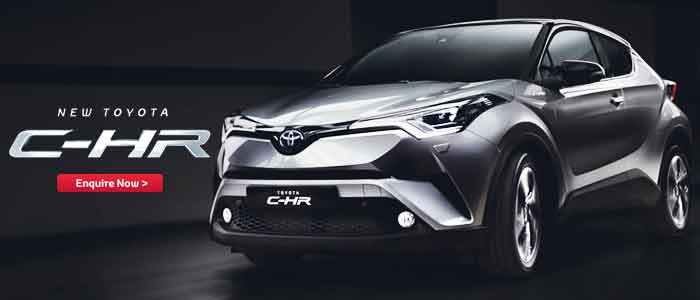From urban construction sites in Lusaka to agricultural projects in the Copperbelt, the backhoe loader is a powerhouse of productivity across Zambia. This single machine combines the functions of two essential pieces of equipment, offering unmatched versatility for digging, lifting, and moving materials. Its ability to handle multiple tasks makes it a cost-effective and efficient solution for any job site.

This guide explains how a backhoe loader works, its key advantages for Zambian projects, and why the Massive brand, available from Car Junction, is the top choice for operators who demand power and reliability. We will cover everything from core components and applications to advanced features like the side-shift mechanism.
How Does a Backhoe Loader Work?
A backhoe loader is essentially a tractor chassis with a loader bucket on the front and a digging hoe on the back. A powerful hydraulic system drives both attachments, allowing a single operator to seamlessly switch between loading and excavating.
Core Components Explained
- Front Loader Bucket: Mounted at the front, this large bucket scoops, lifts, and carries materials like soil, gravel, and debris. It’s perfect for clearing sites, loading trucks, or backfilling trenches.
- Rear Backhoe: The rear of the machine features the iconic digging arm. It consists of a boom (the main arm), a dipper (the secondary arm), and a bucket. This setup provides the power and precision needed for trenching, excavation, and digging foundations.
- Operator’s Cab: This is the command centre. The operator sits in a swivelling seat, facing forward to control the loader and spinning around to operate the backhoe. Modern cabs offer excellent visibility, comfort, and user-friendly joystick or lever controls.
- Hydraulic System: The hydraulic system is the machine’s heart, using pressurised fluid to power the powerful movements of the loader and backhoe arms. It generates the immense force required for heavy lifting and tough digging.
Common Applications in Zambia
Backhoe loaders are true multi-taskers, making them invaluable across various industries:
- Construction: Digging foundations, trenching for utilities, and lifting building materials.
- Roadworks: Repairing roads, digging drainage ditches, and clearing debris.
- Agriculture: Digging irrigation channels, moving feed, and clearing land.
- Landscaping: Creating ponds, shaping terrain, and removing tree stumps.
Practical Advantages for Zambian Jobsites
Investing in a backhoe loader brings several benefits that are particularly relevant for Zambian businesses and contractors.
- Versatility: Why buy two or three machines when one can do it all? A backhoe handles digging, loading, lifting, and material transport, saving you capital and operational costs.
- Compact Mobility: Backhoe loaders are relatively compact and road-legal, making them easy to move between urban project sites in cities like Ndola or Kitwe without needing a separate transporter. Their manoeuvrability is a huge plus in congested areas.
- Cost-Effectiveness: Owning a single, multi-functional machine reduces expenses related to fuel, maintenance, and operator training compared to maintaining separate excavators and loaders.
- Job Site Stability: When digging, operators can deploy two stabiliser legs (outriggers) at the rear. These legs lift the back wheels off the ground, creating a solid, unshakeable platform for safe and precise excavation.
Side-Shift Advantage
While traditional backhoes have a centre-mounted digging arm, many modern machines, including models from Massive, offer a side-shift option. This feature provides a significant boost in versatility and efficiency.
What is a Side-Shift Backhoe?
A side-shift backhoe features a rear digging arm mounted on a sliding carriage. The operator can hydraulically shift the entire backhoe assembly—boom, dipper, and bucket—horizontally along a rail at the back of the machine. This allows the operator to reposition the digging arm without moving the entire tractor.
Benefits of the Side-Shift Feature
- Work in Tight Spaces: Trenching right next to a wall, fence, or existing structure is simple. The operator can slide the arm to the edge of the machine’s frame and dig a parallel trench with ease.
- Reduced Ground Disturbance: Instead of constantly repositioning the entire machine to dig a wide area, the operator can park once and use the side-shift to excavate across a wider lateral range. This saves time and minimises damage to the ground surface.
- Faster Cycle Times: The ability to reposition the digging arm in seconds without moving the tractor streamlines operations like laying pipes or cables, leading to faster project completion.
- Improved Visibility and Precision: By shifting the arm to one side, operators can get a clearer line of sight into the trench, improving accuracy and safety.
Massive Backhoe Loader from Car Junction
Car Junction is proud to offer Massive backhoe loaders, engineered for durability and performance. These machines are built to handle the demanding conditions of Zambian job sites. While our stock is always updating, Massive models like the 3CX Side Shift, 3CX, 4CX, and 420 often feature impressive specifications.
Example Specs for Massive Backhoe Loaders:
- Engine: Robust and reliable Cummins C100 4-cylinder engines, often delivering around 75 kW (100 HP).
- Drivetrain: Capable 4×4 systems for excellent traction on rough terrain.
- Attachments: Equipped with hammer lines for hydraulic breaker attachments and available with features like a telescopic boom for extra reach or a 6-in-1 bucket for ultimate flexibility.
- Capacity: Typical front loader bucket capacities are around 1.2 m³, with backhoe bucket capacities at approximately 0.3 m³.
- Performance: Models like the Massive 4CX can offer a travel speed of up to 40 kph and a maximum digging depth of nearly 6 metres.
These specifications demonstrate the power and capability built into every Massive machine.
Explore our range of Massive backhoe loaders
Buyer’s Checklist for Zambia
Before you import your backhoe loader, consider these key points:
- Centre-Mount vs. Side-Shift: Assess your typical job site. If you work in open spaces, a centre-mount may suffice. For urban projects, utility work, or trenching near obstacles, a side-shift model like the Massive 3CX Side Shift is a superior investment.
- Power and Attachments: Do you need a telescopic boom for extra reach? Are hammer lines for rock breaking essential? Does a 6-in-1 front bucket (for dozing, scraping, and grabbing) fit your needs? Match the machine’s features to your work.
- Support and Logistics: Car Junction Japan simplifies the process of exporting heavy machinery to Zambia. We handle the logistics to ensure your machine arrives safely. Enquire with our team to get a full quote, including shipping.
- Maintenance: Follow a routine maintenance schedule. Regular checks of the hydraulic system, engine oil, and moving parts will ensure your machine’s longevity and reliability.
- Safety: Proper operator training is crucial. Always use the seatbelt, operate on stable ground, and ensure the stabilisers are deployed correctly before digging.
A backhoe loader is more than just a piece of equipment; it’s a pivotal investment in your business’s productivity. With its blend of power, versatility, and advanced features, a Massive backhoe loader from Car Junction is the right tool to get any job done in Zambia.
Frequently Asked Questions (FAQ)
What is the main difference between a side-shift and a centre-mount backhoe?
A centre-mount backhoe is fixed in the middle of the machine. A side-shift backhoe can slide horizontally, allowing the operator to dig offset from the machine’s centreline, which is ideal for working alongside walls or in tight spaces.
What are the typical bucket capacities for a backhoe loader?
For models like the Massive 3CX, you can expect a front loader bucket capacity of around 1.0–1.2 m³ and a rear backhoe digging bucket capacity of about 0.3 m³.
How often should a backhoe loader be serviced?
Daily checks (fluids, tyres) are recommended. Full servicing, including oil and filter changes, is typically scheduled every 250–500 operating hours, but always follow the manufacturer’s specific guidelines.
Can a backhoe loader be used for heavy-duty excavation?
While a backhoe is excellent for trenching and small-to-medium excavation, a dedicated, larger excavator is better suited for continuous, heavy-duty digging due to its 360-degree rotation and greater power.



























